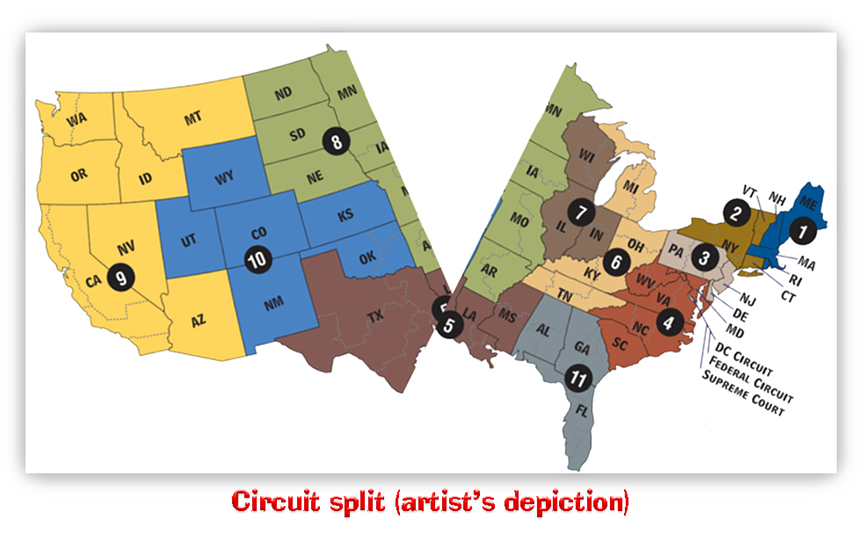We post news and comment on federal criminal justice issues, focused primarily on trial and post-conviction matters, legislative initiatives, and sentencing issues.

MOHR RUMORED TO BE LEAD CANDIDATE TO REPLACE CARVAJAL
Associated Press has reported that Gary Mohr, former director of the Ohio Dept of Rehabilitation and Correction, has emerged as the leading contender to run what AP calls “the crisis-plagued federal Bureau of Prisons.”
Citing three people familiar with the matter, AP said last Friday that Mohr is among those at the top of the list of candidates to replace BOP Director Michael Carvajal, who resigned in January but is remaining in the post until a successor was named.
A final decision has not been yet been made, AP said, and it’s not clear when an announcement will be be forthcoming.
 AP reported that Mohr said he was “shocked to see an article describing me as a top contender” for the position and denied that he had applied or been interviewed. However, AP said, those familiar with the process “insisted Saturday that Mohr remained among those being seriously considered for the position.”
AP reported that Mohr said he was “shocked to see an article describing me as a top contender” for the position and denied that he had applied or been interviewed. However, AP said, those familiar with the process “insisted Saturday that Mohr remained among those being seriously considered for the position.”
 So somebody here’s not telling the truth. If Mohr is truly in the running, then his falsely denying that he’s applied is not the best look for someone stepping into a position where credibility would be refreshing. Of course, it may be that the BOP really is floating his name as a finalist for a job he’s never applied for. Except that would suggest that the people responsible for hiring the new director are incompetent. And how could that be?
So somebody here’s not telling the truth. If Mohr is truly in the running, then his falsely denying that he’s applied is not the best look for someone stepping into a position where credibility would be refreshing. Of course, it may be that the BOP really is floating his name as a finalist for a job he’s never applied for. Except that would suggest that the people responsible for hiring the new director are incompetent. And how could that be?
Mohr, with more than 47 years in corrections, might be a good fit for the job. His corrections career began in a teaching position in the Ohio prison system. He has held other posts since, including as a warden, head of Ohio’s youth prisons system, and eventually Ohio DRC Director from 2010 through 2018. After retiring from ODRC, he became president of the American Correctional Association and formed a prison consulting firm focused on promoting system reform “aimed at providing a sense of hope for those under confinement and the staff responsible for their supervision,” according to Correctional News.
As head of Ohio’s prison system, Mohr oversaw over 12,000 employees and about 50,000 inmates at 28 facilities. The BOP is budgeted for around 37,500 employees, operates 122 facilities and has about 157,000 inmates.
 As ODRC director, Mohr sought to reduce the state’s prison population and “spearheaded efforts to reduce the number of first-time, nonviolent offenders behind bars,” AP said. Having managed to cut prisoners by only about 1,000 inmates in his tenure, Mohr said when he left the director’s position that he was “extraordinarily disheartened” he couldn’t do more.
As ODRC director, Mohr sought to reduce the state’s prison population and “spearheaded efforts to reduce the number of first-time, nonviolent offenders behind bars,” AP said. Having managed to cut prisoners by only about 1,000 inmates in his tenure, Mohr said when he left the director’s position that he was “extraordinarily disheartened” he couldn’t do more.
That, at least, is a candid appraisal, and a refreshing change from the current director, to whom every BOP misstep over the past few years has really seemed to Mikey to be “a testament to the hard work of our dedicated professional staff who support public safety and promote reentry.” Or (remember this one?), “The Bureau has a robust infrastructure to educate and train staff as to prohibited actions and to advise all persons (staff, inmates and the public) as to how to report misconduct.”
If Mohr takes the job, he may find the situation he’s marching into exceeds even the AP’s characterization of the BOP as “crisis-plagued.” This past week alone:
• True Crime: The District of Oregon US Attorney announced that a former FCI Sheridan correctional officer (CO) had pled guilty to a bribery and contraband smuggling conspiracy. Nickolas Herrera admitted guilt in a conspiracy to smuggle contraband to an inmate, beginning with food, clothing, and cigarettes but morphing into cellphones and controlled substances.
• Sexual Predator: In Dallas, a former CO at FMS Carswell, pled guilty to sexually abusing several female inmates there. According to the plea agreement, Luis Curiel admitted to three separate sexual encounters with inmates in October 2021.
 • Sexual Pervert: A BOP CO at FDC Los Angeles last week admitted to sodomizing an inmate while she was quarantining in her cell after a positive COVID test, according to a newly unsealed plea agreement unsealed along with an information charging Jose Viera with deprivation of civil rights under color of law. The disturbing and disgusting assault – for which ample DNA evidence exists, if you get my drift – occurred five days before Christmas 2020.
• Sexual Pervert: A BOP CO at FDC Los Angeles last week admitted to sodomizing an inmate while she was quarantining in her cell after a positive COVID test, according to a newly unsealed plea agreement unsealed along with an information charging Jose Viera with deprivation of civil rights under color of law. The disturbing and disgusting assault – for which ample DNA evidence exists, if you get my drift – occurred five days before Christmas 2020.
• A crisis of credibility: Four months after the fact, the BOP last week got around to admitting to two more inmate deaths from COVID in January, one at Englewood and another at Leavenworth. Meanwhile, the number of BOP employees with COVID has been steadily climbing in the last month, now at 265, while the number of sick inmates has been falling. The reason may have something to do with testing inmates for the coronavirus: as of three months ago, the BOP running total of inmate COVID tests since the start of the pandemic was 128,895. As a running total, of course, it should only be going up or – at worst – remaining unchanged. But not in the BOP’s wacky world of numbers. As of last Friday, that number had actually fallen to 128,719.
 Most charitably, it seems that no testing is being done anymore. The cynical view might be that none of the BOP’s COVID numbers are reliable. But with national COVID numbers and BOP employee infections – numbers the BOP cannot control – going up, it is quite puzzling that inmate numbers keep falling.
Most charitably, it seems that no testing is being done anymore. The cynical view might be that none of the BOP’s COVID numbers are reliable. But with national COVID numbers and BOP employee infections – numbers the BOP cannot control – going up, it is quite puzzling that inmate numbers keep falling.
Mr. Mohr, taking you at your word, we completely understand why you might want to pass on this job.
Associated Press, Former Ohio prisons chief top contender to run US prisons (May 21, 2022)
Correctional News, Gary Mohr (October 18, 2021)
Statement of Michael Carvajal, House Committee on Judiciary (February 3, 2022)
US Attorney’s Office, Former Federal Correctional Officer Pleads Guilty for Role in Bribery and Contraband Smuggling Conspiracy (May 19, 2022)
KTVT-TV, Dallas, Fort Worth prison guard admits sexually abusing inmates (May 18, 2022)
Daily Beast, Prison Guard Allegedly Sodomized Inmate Quarantining With COVID (May 17, 2022)
– Thomas L. Root
























 ‘What, you’re dying of cancer, Mr. Tax Fraud convict, and you would like to spend your final months dying at home instead in a federal prison? Sorry, Charlie, you waived the right to ask the judge for that in your plea deal six years ago…’
‘What, you’re dying of cancer, Mr. Tax Fraud convict, and you would like to spend your final months dying at home instead in a federal prison? Sorry, Charlie, you waived the right to ask the judge for that in your plea deal six years ago…’
